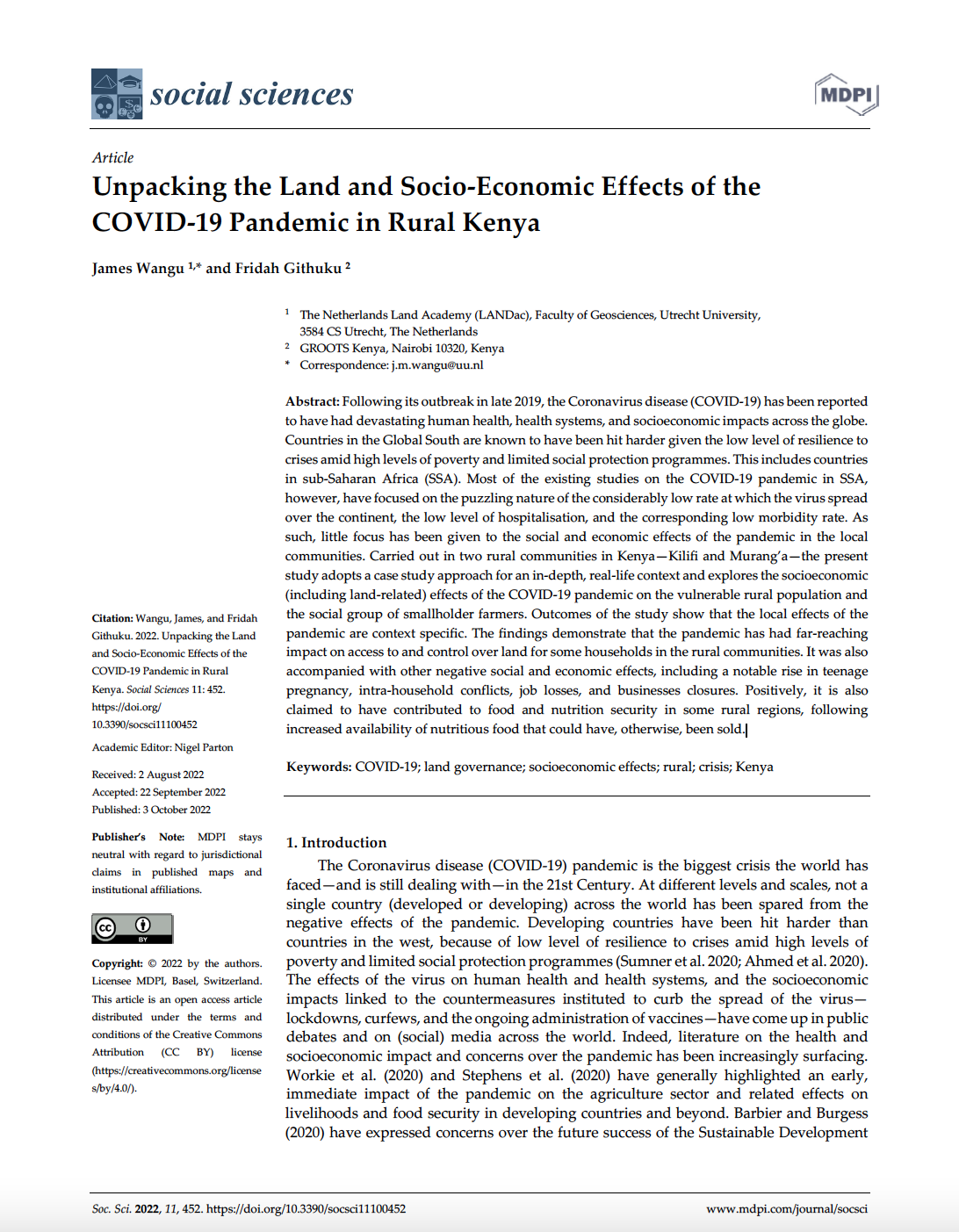Resource information
Following its outbreak in late 2019, the Coronavirus disease (COVID‐19) has been reported to have had devastating human health, health systems, and socioeconomic impacts across the globe.
Countries in the Global South are known to have been hit harder given the low level of resilience to crises amid high levels of poverty and limited social protection programmes. This includes countries in sub‐Saharan Africa (SSA). Most of the existing studies on the COVID‐19 pandemic in SSA, however, have focused on the puzzling nature of the considerably low rate at which the virus spread over the continent, the low level of hospitalisation, and the corresponding low morbidity rate. As such, little focus has been given to the social and economic effects of the pandemic in the local communities. Carried out in two rural communities in Kenya—Kilifi and Murang’a—the present study adopts a case study approach for an in‐depth, real‐life context and explores the socioeconomic (including land‐related) effects of the COVID‐19 pandemic on the vulnerable rural population and the social group of smallholder farmers. Outcomes of the study show that the local effects of the pandemic are context specific. The findings demonstrate that the pandemic has had far‐reaching impact on access to and control over land for some households in the rural communities. It was also accompanied with other negative social and economic effects, including a notable rise in teenage pregnancy, intra‐household conflicts, job losses, and businesses closures. Positively, it is also claimed to have contributed to food and nutrition security in some rural regions, following increased availability of nutritious food that could have, otherwise, been sold.


